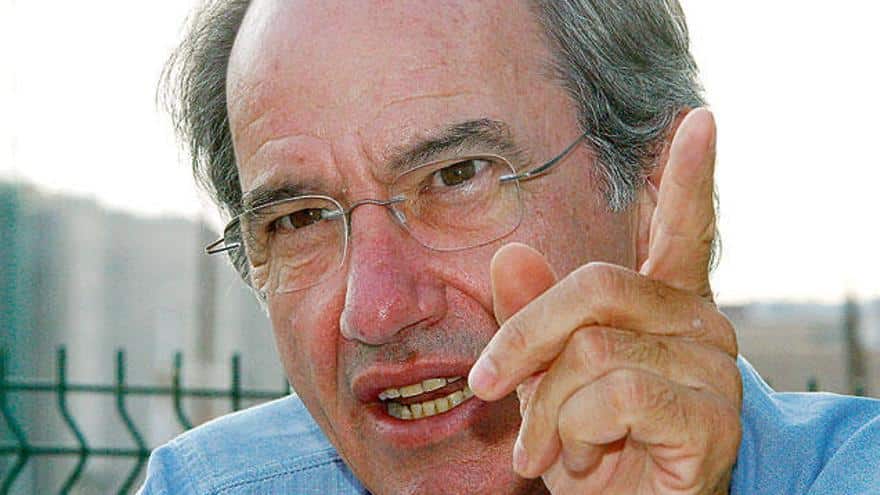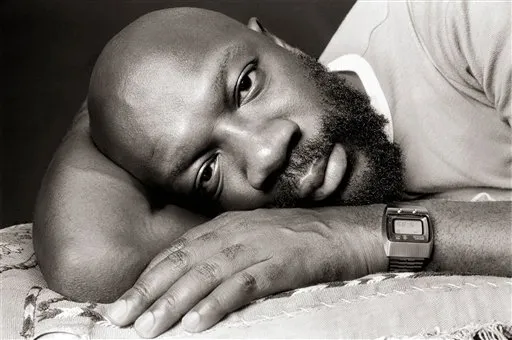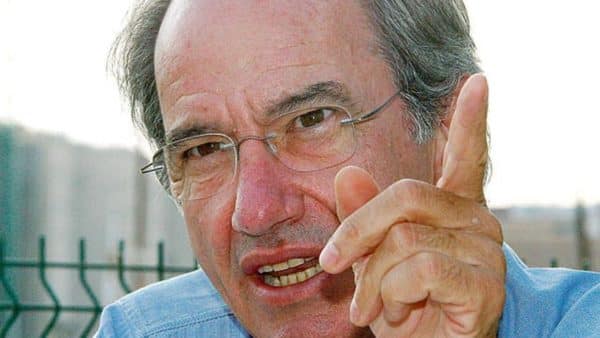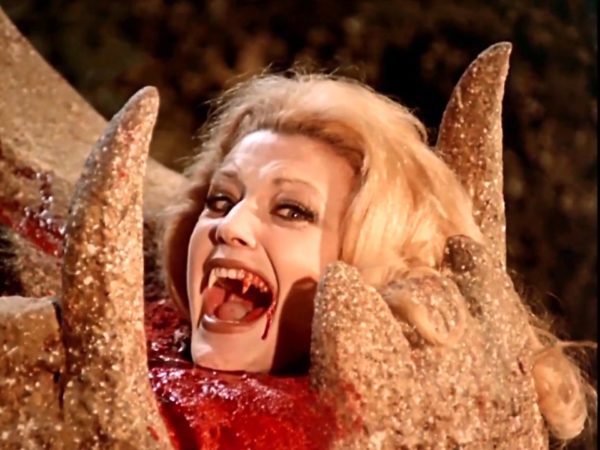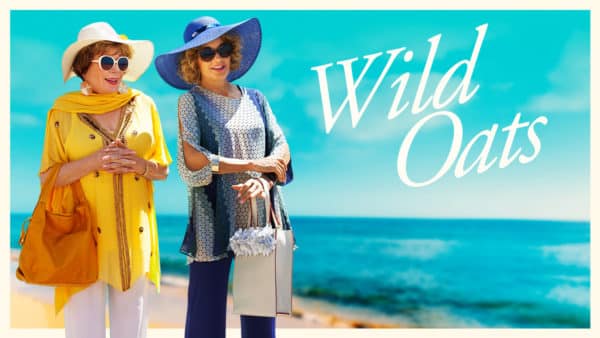You may not recognise the name, but you would probably recognise a face, which if it is not comparable with Brad Pitt’s or George Clooney’s, is certainly memorable.
Today, Spanish actors are a common sight in international films. We are all familiar with Javier Bardem, Penelope Cruz, Paz Vega or Antonio Banderas.
And yet none of them have participated in as many films and series, speaking the language of Shakespeare, however accented, as Majorcan born Simón Andreu.
The stars he has shared screen time with are a tribute to the career of Spain’s most international of actors; Sharon Stone, Martin Sheen, Kris Kristofferson, Charlton Heston, Hale Berry, Pierce Brosnan, Natalie Portman, Julianne Moore, Stewart Granger, Bruce Willis, Sigourney Weaver, Franco Nero, Renee Zellweger, Ryan Reynolds, Morgan Freeman, Richard Harris, William Holden and Christopher Lee, to name a few.
The history of movie making in Spain goes back many years, to the days when it was possible to hire the Spanish army to film epic battles such as those in Spartacus, Alexander the Great or Cromwell.
Gradually Spanish directors and actors began to increase their inclusion in international productions great and small and one of these, The Night of the Sorcerers (1973), directed by Amando de Ossorio, saw the first English language participation of Andreu in an amusing tale of gore and claw, filmed near Madrid with the participation of the River Alberche near Aldea de Fresno, also used for scenes from ‘Spartacus’ and ‘A Fistful of Dollars.’
The same year he made Charge (1973) with Stephen Boyd, a western filmed all over Almería, and especially Tabernas, about stolen arms and whose only touch of originality is the appearance of a Muslim bounty hunter.
Treachery is an unattractive quality, but Andreu is nothing if not versatile. Billed as Simon Andrew, he plays an evil bandit with a penchant for castration. The film opens with Andreu’s men ambushing a military convoy in the Garganta de Alfaro.
Later he visits a tavern to enjoy the owner’s wife. The tavern, from the outside anyway, is what is now the Western Leone theme park, built for Once upon a Time in the West.
While he may not be described as ‘magnificent’, in Blue Jeans and Dynamite (1976) Andreu shared screen time with Robert Vaughn, he of ‘The Magnificent Seven,’ in an art heist thriller also known as ‘Three Way Split’ and ‘Double Cross’, in which he is an indebted would be playboy.
The Estudios Madrid 70, Daganzo, Madrid, were used for the scenes where a cowboy film is being made using the western township.
A few years would pass before his next foreign film, Paul Verhoeven’s Flesh and Blood (1985). Actors, like footballers, are basically mercenaries, willing to sell their soul for a role, and so Andreu became a mercenary called Miel (Honey), betrayed along with fellow mercenary Rutger Hauer.
At the beginning of the film we are told that this is Western Europe 1501, and indeed it could not be more westerly, as the whole film was shot in Spain.
The opening scene shows a siege, and the familiar wall of Ávila is easily recognised as the mercenary troops imbibe religion and alcohol in preparation for the assault on the city gate called the Puerta del Carmen, named after the convent that used to stand there. It is in fact exactly the same spot where Cary Grant’s guerrillas, including Frank Sinatra and Sofia Loren, would storm the walls in The Pride and the Passion.
Once inside the castle however, they transfer to the long and winding stone streets of Cáceres in Extremadura.
After attacking a wagon train, in good old western European style, and kidnapping a not unwilling heroine, they move into the castle of Belmonte in Cuenca, used for the joust scene in ‘El Cid,’ and currently belonging to ancestors of the Duchess of Alba.
Tattooed mercenaries, plague, revenge, costumes straight out of ‘Sergeant Pepper’ and a complicated love-hate triangle; it could almost be a contemporary film instead of one set in medieval times.
From mercenary to medical practitioner, in Bad Medicine (1985) Andreu starred with Alan Arkin, and Steve Guttenberg in a comedy shot partly in the province of Murcia.
From medicine to management, in Crystal Heart (1986), Simón plays a sleazy manager in a ‘boy in a bubble’ story.
It’s all action in Counterforce (1988) made by Spanish director José Antonio de la Loma, and shot in Ibiza and in Barcelona province, particularly at Badalona, Vilanova i La Geltru, Castelldefels and Arenys de Munt.
Among the international cast were George Kennedy and musician Isaac Hayes, most famous for having composed the theme music for the movie ‘Shaft.’
As a curiosity, Nancy Venables, daughter of footballer Terry Venables, who at that time was the manager of Barcelona Football Club, also acted.
Three weeks were spent filming in Ibiza, posing as the fictitious Arab Republic of North Africa, where the Counterforce group were sent to protect a deposed Arab leader from his deposer.
Ibiza also represents the Balearic Islands, and there they filmed at Santa Eulalia del Rio, whose profile appears more than once, Hotel Hacienda na Xamena (the luxurious HQ of the dictator’s nephew with its distinctive watchtower beside the swimming pool) and Calo d’en Real.
The magical island of Es Vedra appears quite a lot, especially when Kassar’s wife is rescued from a yacht.
Andreu Simón notched up an appearance as the Commissioner of a police force totally unable to take any kind of action in its own backyard.
This may possibly be the film with more clichés per square metre ever made.
Gil Parrondo, who worked on Doctor Zhivago and won Oscars for Nicholas and Alexandra and Patton, both made in Spain, was largely responsible for locating part of Onassis: The Richest Man in the World (1988) in Cádiz, Vejer de la Frontera, Palma de Mallorca and Madrid.
Raúl Juliá, Anthony Quinn, Jane Seymour, and of course, Simón Andreu made up the cast.
Fine Gold (1989) was a strange film, and one aimed at showcasing Rioja wine more than anything else, although it does include a 74 year old Stewart Granger and that nasty lizard Diana from the TV series ‘V’, Jane Badler in human form.
Filmed around the vineyards of La Rioja, including the lovely sandstone village of Sajazarra, it’s Falcon Crest but with a lower budget as we follow the rivalry between a Rioja bodega and a southern competitor from Jerez.
Spanish director José Antonio de la Loma directed, and in an orgy of imagination Andreu’s character was called Simon, while Ray Walston played Sacacorchos, which means ‘corkscrew’.
Sharon Stone joined the long list of Andreu’s co-stars in a re-make of Blood and Sand (1989) filmed around Jerez de la Frontera, playing the
half-American daughter (don’t ask me which half!) of an American land owner in the area, where she is known as Doña Sol. All the other characters are Spanish actors who speak to each other in English, but occasionally use Spanish expressions; a bit weird.
Rudolph Valentino and Tyrone Power stayed on their own side of the Atlantic to make versions in 1922 and 1941 respectively.
Would-be bullfighter Juan lives in Sevilla and we see the Giralda tower and the Plaza de España briefly. In the latter, George Lucas filmed ‘Attack of the Clones’ and David Lean some scenes from ‘Lawrence of Arabia.’
In the end, like all good Romans, Juan cannot live with his shame and resolves his dilemma by throwing himself on the horns of his bull. Simón Andreu plays Juan’s self-seeking step-father.
A step up in his next film sees Andreu playing a mineral water company executive, where Jeff Goldblum also works, in Shooting Elizabeth (1992).
It’s a film that would be difficult to make today, a ‘comedy’ about an American executive anguishing over murdering his wife while on a second honeymoon, staying at the Hotel Eden Roc, at Sant Feliu de Guixols.
Goldblum finally finds love with his wife with the help of a mountain-walking Catalan, Chinese priest, who is none other than Inspector Closseau’s faithful manservant Burt Kwouk.
In The Disappearance of Garcia Lorca (1996) Simón Andreu plays General Velez in a detective story based on British historian Ian Gibson’s research into the murder of the poet García Lorca during the Spanish Civil War. It stars Andy García, and was largely shot in Lorca’s native city of Granada, as well as Aranjuez and Madrid.
From General to a mere guerrilla, in Gaston’s War (1997), Andreu is a resistance fighter helping pilots to escape to Spain.
Of course Spanish film making is probably most famous for its spaghetti westerns, such as Dollar for the Dead (1998), where Emilio Esteve assumes Clint Eastwood’s spaghetti persona for a film made in the locations of the good old days when giants like Sergio Leone walked the dry gulleys and sandy hills of Tabernas in Almería and the wastelands around Madrid to bring death and glory to the screen.
The film is a self-confessed tribute to Leone, including cheroots, slo-mo shooting, a touch of opera and even a three way shoot out at the end as in ‘The Good, the Bad and the Ugly.’
Esteve would years later return to Spain with his father Martin Sheen to direct ‘The Way’, a film in which Spanish actor Simón Andreu, a gunslinger in this film, reappears as a pilgrims’ hosteller.
Back in uniform, in Outlaw Justice (1999) Simón appears this time as Colonel Lupo.
The film was part of a revival of Almería as a scenario for filming westerns, which were considered dated by this time, but adding interest by using Country Music stars as cowboys.
Kris Kristofferson, Waylon Jennings and Willie Nelson ground their axes in the ‘western’ town of Fort Bravo, Texas Hollywood at Tabernas to bring back life to the old Spanish west.
Andreu’s first participation in a film about Saint James’ Way, Camino de Santiago (1999) was a Spanish production, starring Anthony Quinn, Charlton Heston and Robert Wagner.
The film is a murder mystery with, at the centre of the plot, a medieval game, ‘El Juego de la Oca, ’ a more complicated version of Snakes and Ladders, popular among medieval pilgrims.
Andreu appears in Pontevedra to express his opinions about abstract art with the help of a knife, while two delinquents pursue a third from Hemingway’s favourite hotel, La Perla, through the streets of Pamplona.
Finally we reach Santiago de Compostela as all good pilgrims who haven’t been murdered on the way should do, with the Pórtico de la Gloria and the flying smokeball of the botafumeiro.
Donning his white coat once again, Andreu plays Doctor Alvarez in Die Another Day (2002).
The spa where James Bond meets Jinx (Halle Berry) is in fact the Castle of San Sebastián in Cádiz, and the wide sweeping Bay of Cuba is Cádiz Bay too. Curiously Fidel Castro’s government wasn’t too keen to let Bond do his stuff in the original locations.
A new role for Andreu is as a prison warden in Beyond Re-Animator (2003), where practically all of the action takes place inside Arkham State Penitentiary, although the film was made in Valencia’s old Modelo Prison, closed before its conversion into a local government office complex.
Also participating was Elsa Pataky, real life wife of super hero Chris Hemsworth (Thor).
In Art Heist (2004) a valuable El Greco painting is stolen from a Spanish gallery, specifically the Museo Nacional de Arte Contemporáneo of Barcelona, and a New York art expert Sandra Walker (Ellen Pompeo) is called in. Sandra is divorced from Bruce (William Baldwin), an NYPD detective. When several people connected to the case are killed, Bruce flies to Spain to help with the investigation.
The film features many classic Barcelona locations, including Parc Güell, Montjuïc, Tibidabo amusement park, La Rambla, the market of Boquería, as well as Barcelona’s port and its gothic cathedral.
Simón Andreu expands his international cachet by playing a Russian art collector under suspicion.
From prison to asylum, Javier Bardem has a ‘tete a tete’ with Natalie Portman in a dungeon run by Andreu in Goya’s Ghosts (2006) directed by Milos Forman.
It was filmed all over Spain, including Madrid’s El Retiro park, and El Pardo royal palace, as well as the Ermita de San Antonio de la Florida, where Goya is actually buried.
There was more shooting at the 12th century Monasterio de Veruela in Zaragoza province, and in Segovia, ending with Bardem’s execution in Salamanca.
Many film producers assure their audiences that no animals were hurt in the making of the film, although they rarely mention babies.
In Savage Grace (2007), the baby spends a lot of his time in his parents’ smoke shroud as they lean over his cot, ash-dangling fags in mouths. It may explain why he ends up as a dope-smoking hippy in Mallorca.
Although set in New York, Paris, Mallorca and London, the entire film was in fact shot in Spain, mostly Catalonia. Simón Andreu this time tries his hand at playing a Frenchman, Jean Pierre Souvestre.
The film is based on a true story of the American dynasty of the ‘Bakelite’ fortune, with Julianne Moore as the rich, tortured wife and mother.
In another film about Lorca, as well as Dalí and the film director Luis Buñuel, in Little Ashes (2008), Andreu plays Fernando de Valle.
It was made largely in Cadaqués, Girona, and in various locations in Barcelona. There are also brief interludes when Lorca visits his native Granada, with a brief twilight shot of the Alhambra Palace.
Speaking of ‘twilight,’ Dalí is played by none other than blood-sucking Robert Pattison, the only Briton in a completely Spanish cast.
The film is named after a Dalí painting: ‘Cenicitas.’
Emilio Esteve, the director of The Way (2010), met Simón Andreu while making Dollar for the Dead in Almería, and signed him up for The Way to play a bullfighting fan and hosteller.
In reality the hostel is the Hotel Akerrata in Navarra. It is here that Sheen meets Sarah, who is suppering in the hotel garden with a group of French pilgrims arguing about Charlemagne and Roldan.
Martin Sheen’s own father was a Galician immigrant from Salceda de Caselas, in Pontevedra. His son Emilio not only directs but also plays his dead son; posthumously of course.
The Cold Light of Day (2012) is a thriller starring Bruce Willis and Sigourney Weaver in which an American family is kidnapped during a holiday in Spain; something which almost never happens in reality, all Americans may rest assured.
Various Spanish actors participated, including Simón Andreu as Pizarro, a policeman who threatens Willis.
Filming took place on the Costa Blanca and Madrid. It is here that Bruce’s fee probably ran out and he was shot.
Gran Canaria is the location for Wild Oats (2016), shot in June 2014 with a bundle of well knowns such as Jessica Lange, Shirley MacLaine, Demi Moore and Billy Connolly, while Simón Andreu is on hand as a hotel manager.
The Seville Communion/The Man from Rome (2022) is set in Sevilla and Rome, in which a computer hacker meets a ghostly 17th century church (or something like that).
It is yet another film based on a novel by Arturo Perez-Reverte, with performances by the actor who played Conan as a boy, Jorge Sanz, inevitably, Simón Andreu.
Andreu’s participation in TV series goes back some way, to his role as a detective in C.I.D. a three season 1990s series about a couple of ex-police officers who look for the good life in Spain, but end up chasing crooks as usual.
Filming took place around Fuengirola, as well as Marbella and Mijas, all in the province of Málaga.
Also in the 90s he participated in a soccer series, created partly by Gary Lineker, who also has a cameo, about an English footballer who is signed by Barcelona FC. Andreu plays Roberto Gámez.
In episode 5 of The Mallorca Files a dog dies in a vineyard, with shooting at Bodegas Oliver Morgagues and Bodegas Ribas, representing the fictional Bodegas Negra.
Andreu, this time acting in his native Mallorca, plays a wine-maker, Emilio Byass, shotgun in hand.
Andreu has also appeared in two other international series; Vampire Academy, where he is the Queen’s Herald, Clarence, and Snatch, a series about young gangsters on the Costa del Sol featuring Harry Potter’s young mate Rupert Grint.
Not all of his films have been made in Spain; he also participated in Bridget Jones; the Edge of Reason and the Hitman’s Wife’s Bodyguard among others.
Information about almost 1,000 English language films and series can be found on www.moviesmadeinspain.com

